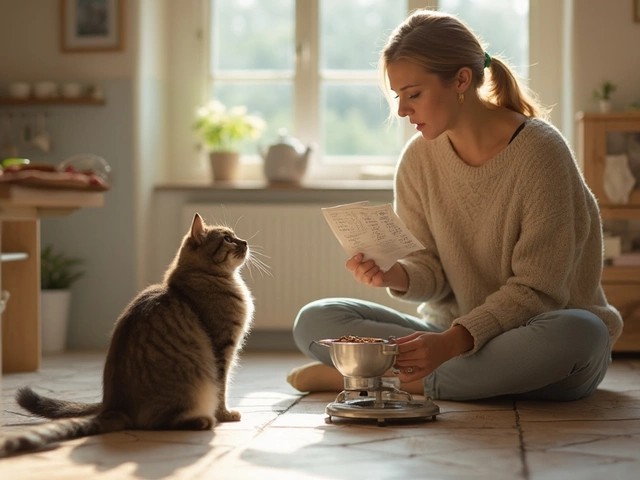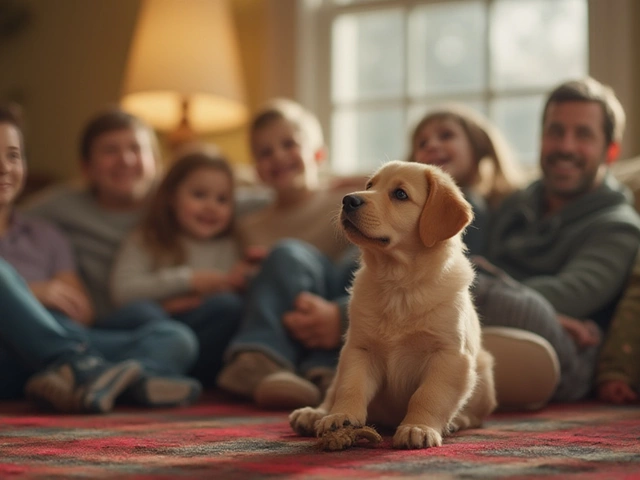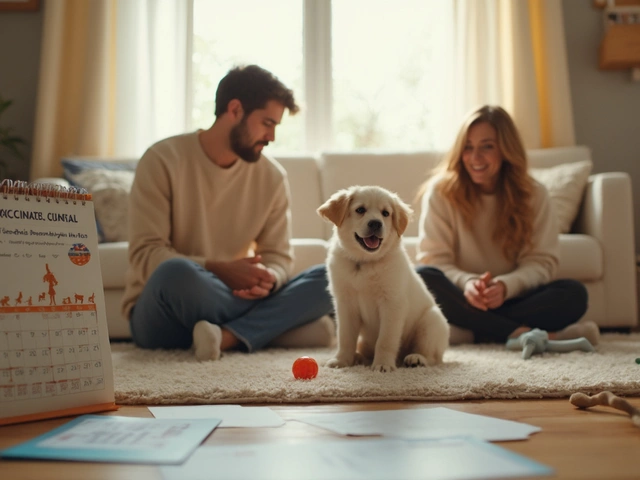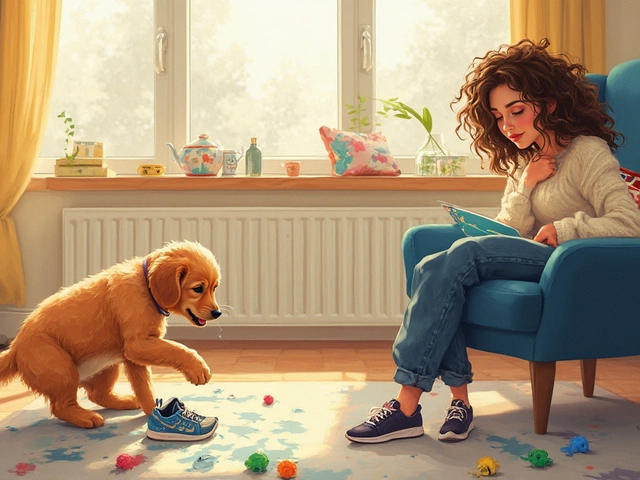Ever noticed how some people swear their dog sleeps better next to them, while others worry it’ll turn their pup into a clingy mess? Let’s face it—allowing your dog to snuggle up in your bed is one of the coziest, sweetest parts of having a pet. But right as you’re about to buy matching pillowcases, a little nagging voice pops up: what if this is actually bad for them? Suddenly, you’re reading horror stories about dogs who can’t bear to be alone for even a bathroom break. Is letting your dog sleep in your bed creating a recipe for separation anxiety? Let’s get real about what research and actual dog owners have experienced, and sort the facts from the fur-covered fiction.
What Is Separation Anxiety in Dogs—And Who Gets It?
If your dog loses it the second you close the door, chews the doorframe, or barks like it’s the end of the world, you might be dealing with more than just a puppy with FOMO. Separation anxiety is a real behavioral issue where dogs freak out when apart from their humans. It’s not the same as normal “I miss you” whining. We’re talking chewed shoes, destroyed blinds, puddles on the floor—the doggy works.
Studies suggest that somewhere between 14% to 20% of dogs may show signs of some level of separation anxiety. That’s a lot of chewed furniture. It usually kicks in when a dog is super attached to one or more people, then suddenly gets left alone, whether for work, errands, or the occasional date night. But before blaming your soft heart (or extra comfy duvet), it’s important to know: experts agree there’s no one-size-fits-all cause. Genetics play a big role, as does early puppyhood experience and even how much socialization your dog got during its first few months.
Dogs adopted from shelters or rescues can be a bit more prone to anxiety, possibly due to trauma or loss early on. Breed is a factor too; for example, Labrador Retrievers and German Shepherds are more likely to struggle if left alone. Dog separation anxiety doesn’t always look dramatic either, especially in clever dogs that just hide their distress until you’re out of sight. If you hear complaints from the neighbors or walk in on overturned objects, you’ve probably got some separation issues on your hands. But where does your dog sleeps at night fit in? Is the bed really that big a deal?
The Psychology of the Pack: Dogs and Sleeping Habits
Humans aren’t the only creatures who crave a cozy bed at night. In the wild, it’s totally natural for canine family units to snuggle up together for safety and warmth. When you let your dog into your bed, you’re not only providing him with comfort but unintentionally reminding him of those ancient pack vibes. And honestly, plenty of us love the feeling too—it deepens our bond and even helps people with anxiety, according to a 2018 study published in Human-Animal Interaction Bulletin.
But does sharing a bed send the message that your dog can’t function if you’re not around? The science isn’t nearly as clear-cut as dog forums make it seem. There’s simply not a pile of research that proves sharing your bed causes separation anxiety. In fact, University of Florida researchers found no direct link between co-sleeping and behavioral issues like separation anxiety. One study in the journal Anthrozoös (2021) surveyed over 1,000 dog owners and found that bed-sharing was actually associated with stronger attachments—but not increased anxiety. In fact, some dogs with healthy routines actually showed fewer destructive behaviors, possibly because they felt more secure at bedtime.
Of course, how you handle boundaries during the day matters. The real trouble starts if a dog has no clear structure—if your pup follows you from room to room, panics when you leave, and gets his way every single time, sleeping together can become one more symptom of a bigger problem. On the other hand, if your dog has learned to chill on his own sometimes, co-sleeping alone isn’t a trigger for dependency. It really comes down to your dog’s individual temperament.
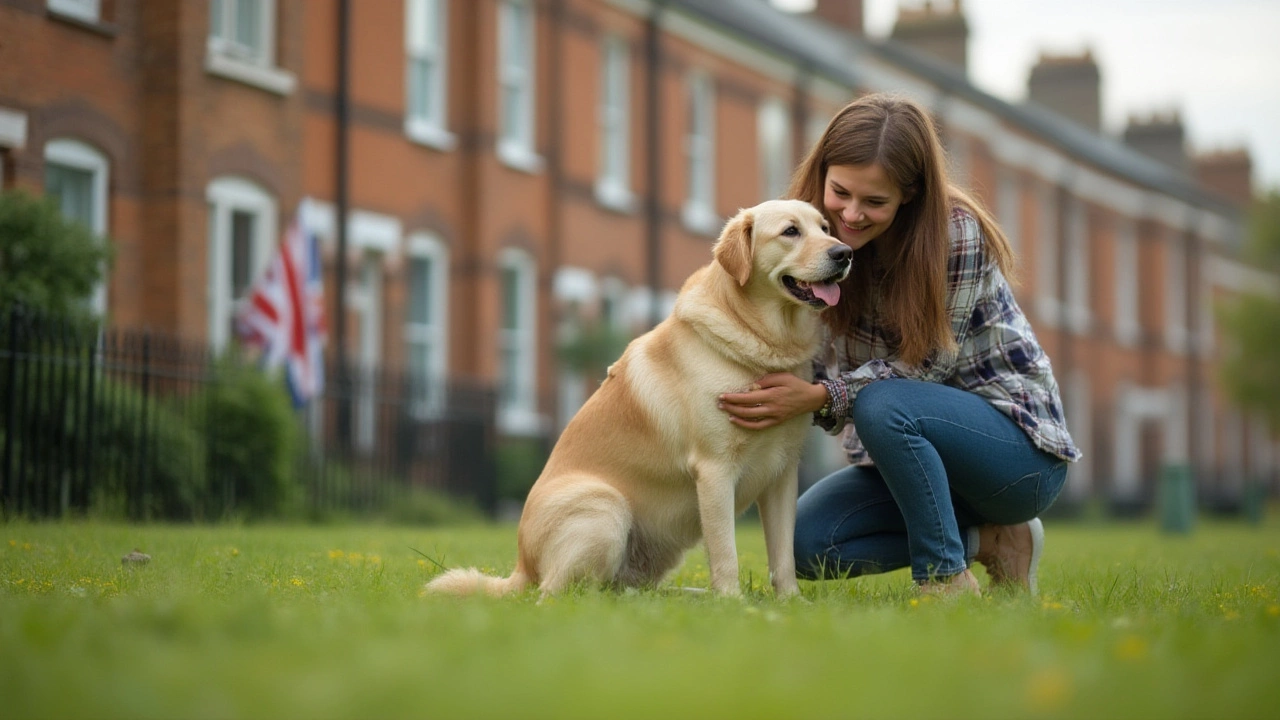
Myth-Busting: Does Sleeping in Your Bed Cause Separation Anxiety?
So what's the truth? To date, there’s no scientific proof that letting your canine sleep in your bed will automatically cause, worsen, or prevent separation anxiety. Sometimes it’s the opposite: dogs that feel included and secure may actually be more relaxed when it’s time to rest. The American Veterinary Medical Association reports that 43% of dog owners allow their dogs to sleep in the same bed. If co-sleeping really was a fast track to separation issues, we’d be swamped with anxious pets by now.
Here’s the thing—most animal behaviorists point out that separation anxiety is less about where your dog sleeps and more about what happens during the day. Problems crop up when a dog never learns how to self-soothe, spends too much time being rewarded for constant closeness, or isn’t taught to feel confident alone. If your dog freaks out when separated during the day, that’s where you need to step in—not just banish him from the bed.
Of course, certain red flags shouldn’t be ignored. If you notice that your dog loses his mind whenever you’re out of sight, starts becoming possessive of your bed, or develops new worries at bedtime, it’s time to adjust the routine. In some households (think light sleepers, kids with allergies, dogs with aggression or guarding tendencies), bed-sharing just isn’t practical. Always put safety first, for humans and pets alike.
| Behavior | Common Causes | Does Bed-Sharing Impact? |
|---|---|---|
| Barking/Howling Alone | Anxiety, lack of routine | No proven effect |
| Destructive Chewing | Anxiety, boredom | No proven effect |
| Incontinence Indoors | Stress, medical issue | No proven effect |
| Restlessness at Night | Poor sleep habits | Can make better or worse |
Want to help your dog manage time apart? Bed-sharing can still be part of your nightly routine as long as you work on building up your pup’s independence. Start with very short periods of separation during the day, reward calm behavior, and avoid making a huge fuss at reunions. The more routine and chill you can make comings and goings, the less likely your dog is to develop anxiety—no matter where they sleep.
Tips for a Balanced Bedtime: Co-Sleeping and Boundaries
If you love sharing your bed with your dog, but you also want to avoid encouraging super-clinginess, there are smart, practical things you can do right now:
- Establish a predictable pre-bed routine. When things feel the same each night, dogs relax faster. It can be feeding, cuddles, and then sleep—all in the same order.
- Teach ‘Place’ or ‘Bed’ commands. Your dog needs to know he can sleep elsewhere if asked. Practice rewarding him for lying on his own mat or bed, both next to you and farther away.
- Try short periods of solo time. Make alone-time positive. Leave tasty chew toys when you leave, or use puzzle feeders as a distraction.
- Don’t reward anxious behavior. If your dog whines when you leave the room, don’t rush back immediately every time. Wait until he calms down, then return calmly.
- Mix it up sometimes. Let your dog sleep in his own crate or bed now and then, especially if your schedule or living arrangement changes.
- Consider your own needs. If you toss and turn, have allergies, or your dog is too restless, everyone might sleep better with some distance. That’s not a failure—it’s good pet parenting.
If your dog already shows major stress when apart, or his behavior changes after joining you in bed, don’t hesitate to talk to your vet or a certified dog behaviorist. There could be a medical reason at play, or you may need a personalized plan to ease anxiety.
Finally, pay attention to your dog’s personal comfort. Some pups actually prefer the cool tile floor or their own plush donut bed. You might be surprised who’s happiest sprawled out in a sunny spot rather than cuddled up. Offer choices and see what they pick!
So next time you catch yourself worrying as your dog curls up next to you, remember: co-sleeping isn’t the villain in the separation anxiety story. Your daily routine, how you handle the little separations, and communicating consistent boundaries matter way more. The truth? For most dogs—and humans—a good night cuddle just means better sleep, not bigger worries.

